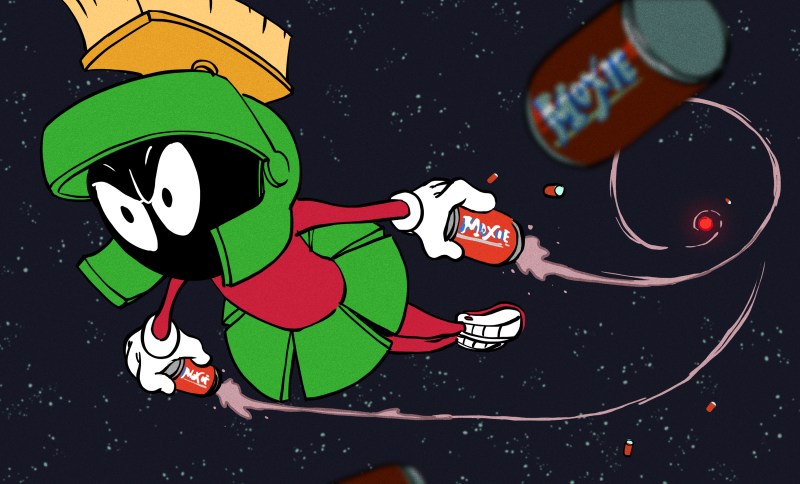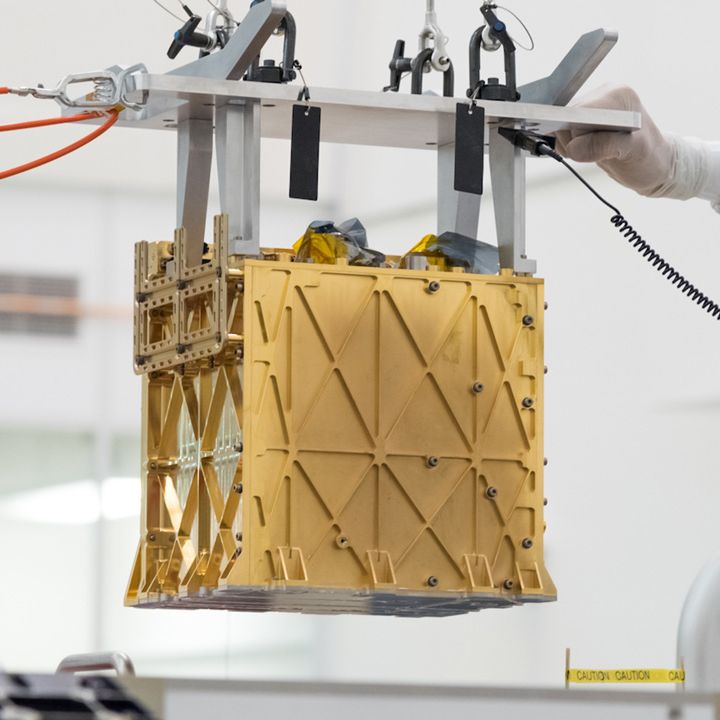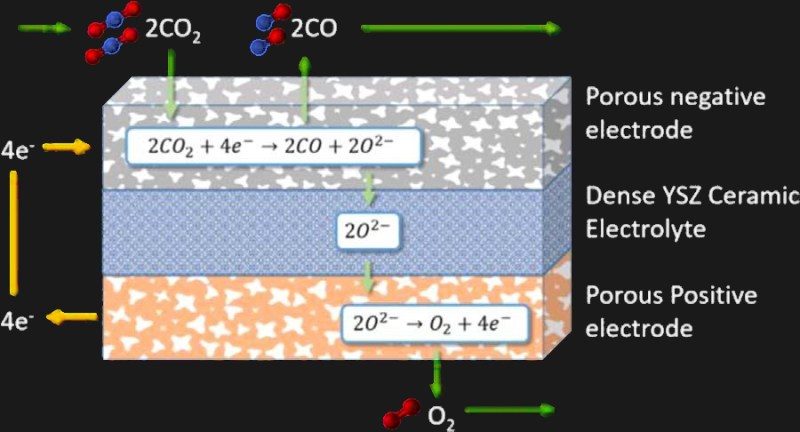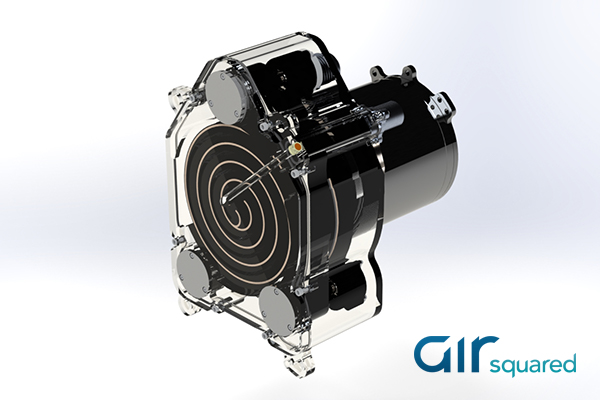Got Oxygen? Future Mars Missions are Relying on the MOXIE of Perseverance

The rule of thumb with planetary exploration so far has been, “What goes up, stays up.” With the exception of the Moon and a precious few sample return missions to asteroids and comets, once a spacecraft heads out, it’s never seen again, either permanently plying the void of interplanetary or interstellar space, or living out eternity on the surface of some planet, whether as a monument to the successful mission that got it there or the twisted wreckage of a good attempt.
At the risk of jinxing things, all signs point to us getting the trip to Mars reduced to practice, which makes a crewed mission to Mars something that can start turning from a dream to a plan. But despite what some hardcore Martian-wannabees say, pretty much everyone who goes to Mars is going to want to at least have the option of returning, and the logistical problems with that are legion. Chief among them will be the need for propellants to make the return trip. Lugging them from Earth would be difficult, to say the least, but if an instrument the size of a car battery that hitched a ride to Mars on Perseverance has anything to say about it, future astronauts might just be making their own propellants, literally pulling them out of thin air.
Living Off the Land

Even with the resource constraints placed on the Perseverance rover’s design by the full suite of science experiments planned for the mission — the sample caching system alone requires two dedicated robots and occupies almost all of the belly of the beast — JPL designers and scientists still found a way to squeeze two technology demonstrations into the rover. This is not without precedent; the Sojourner rover included on the Mars Pathfinder mission in 1997 was a proof-of-concept design that led directly to the remarkably successful Spirit and Opportunity rovers and eventually to Curiosity and Perseverance. Pathfinder also demonstrated the feasibility of using airbags to land payloads on Mars; while not useful for big payloads, we expect to see landings use the method again in the future.
While the Ingenuity helicopter seems to have captured the lion’s share of the general public’s attention, the Mars 2020 technology demonstration we find most interesting is the Mars Oxygen ISRU Experiment, or MOXIE. It’s not often you encounter nested acronyms, but that only serves to illustrate the complexity of the experiment. ISRU stands for “in situ resource utilization,” and refers to the extraction and use of materials found in space or planetary environments. Rather than shipping raw materials all the way from Earth to space, ISRU seeks to exploit what’s already out there. Other than stretching the definition to include harvesting solar energy with photovoltaics, we’ve done very little in the way of ISRU so far; NASA recognizes the need to change this model, and MOXIE is very much a step in this direction.
The Secret’s In the Ceramics
If an alien space probe were to come to Earth, it wouldn’t face much of a challenge to extract oxygen from the environment. Our atmosphere is roughly 21% oxygen, which makes it easily separable from the air. It’s also abundant in the water that covers our planet, and separating oxygen and hydrogen from water is easily accomplished with electrolysis.
Mars, however, is nowhere near as blessed with water as Earth. We’ve yet to find significant reserves of liquid water there, and while there may be enough water there to create an ocean that could cover the entire planet, most of it is locked away in the north polar ice caps and other frozen reserves that are out of reach. Recovering sufficient water for electrolysis would be energetically difficult. There is, however, an essentially unlimited source of oxygen on Mars: its atmosphere. While there’s only a trace of oxygen, 95% of the thin air is carbon dioxide. MOXIE is designed to extract oxygen from this abundant local resource, using something called solid oxide electrolysis.

Like the electrolysis of liquid water, solid oxide electrolysis relies on electricity to break a molecule down into its component elements. But there’s much more to it, and it all revolves around the special characteristics of the ceramic materials at the heart of the machine. Certain ceramics — in the solid oxide electrolyzer (SOXE) cells inside MOXIE, the material is zirconium oxide stabilized with a small amount of scandium, and is known as ScSZ — behave like electrical conductors for oxide ions, which are just basically oxygen molecules with a couple of electrons stripped away. That property (along with other general properties of ceramics like heat resistance, high strength, lightweight, and workability) makes ScSZ the perfect material for solid oxide electrolysis.

The oxygen-production cycle in MOXIE starts with a simple air compressor and some dust filters. Rather than a more traditional piston compressor or a diaphragm pump, MOXIE includes a scroll-type compressor, where two scroll-shaped elements are nested together. One, the stator, remains fixed, while the rotor element revolves in a tight orbit within the stator without rotating on its axis. This creates a narrowing space between the two elements that forces gas from the perimeter of the compressor body to the center. Scroll compressors have a lot of advantages for applications like this, with oil-free operation being chief among them. MOXIE’s scroll compressor (and the BLDC motor that powers it) is its only moving part, and is capable of boosting the pressure of the thin Martian atmosphere to about the same pressure as the Earth’s atmosphere — about a 100-fold increase.
Since solid oxide electrolysis requires high temperatures — on the order of 800°C — the compressed process gas is next passed over a series of 3D-printed heat exchangers. A large part of MOXIE’s power budget goes into heating the gas; MOXIE is so power-hungry that a single 2- to 4-hour cycle requires more power than the rover’s radioisotope thermoelectric generator (RTG) produces in a single sol. This means MOXIE uses must be scheduled carefully, as nothing else on the rover can be drawing a significant amount of power.
Act Like a Tree
The heated process gas, which is about 98% carbon dioxide, then enters a stack of SOXE cells. Each cell is a sandwich of porous metal electrodes on each side of a thin piece of ScSZ acting as a solid-phase electrolyte. A current is applied across the cell as gas infiltrates the cathode; there, a combination of thermal decomposition and the catalytic action of the metal causes the following reduction reaction:
The oxide ions (2O2-) are ionically attracted to the ScSZ electrolyte. They are pulled away from the carbon monoxide waste product and unreacted process gas left in the porous cathode and into the electrolyte, where they then hit the boundary with the anode. The positive charge of the porous anode causes the oxide ions to be oxidized:
Sensors will monitor the electrolysis process and test the oxygen the SOXE stack produces for purity and flow rate, which is expected to be up to 12 g/hr using the maximum current of 4 Amps. Once the analysis is complete, all gasses are vented into the atmosphere — there’s no sense in saving it, at least not yet, since MOXIE is only a proof-of-concept. Scaled up approximately 200 fold, though, a mega-MOXIE could potentially produce and store the estimated 30 metric tons of oxygen needed to put a Mars ascent vehicle into orbit for a trip home. Sending that much liquid oxygen from Earth would mean lifting at least 10 times that mass, meaning MOXIE might someday save four or five heavy-lift launches to Mars.
The chemistry of MOXIE is pretty simple, but as always, there are complications and practical considerations, particularly with unwanted reactions clogging the porous cathode with metal oxides or even solid carbon. But perhaps the biggest practical consideration is that, like the mission’s entry descent and landing (EDL) phase and much of the terrain navigation the Perseverance rover will do, MOXIE will have to run its experiments autonomously. If something goes wrong, there won’t be anyone to push a button or purge a line. Like the astronauts who will depend on MOXIE’s someday big brother to get them home, the experiment is on its own, and will have to get its job done no matter what Mars throws at it.
Post a Comment